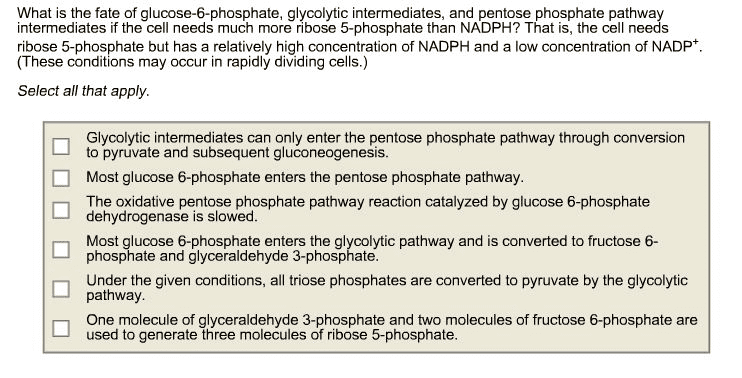BCM 475 Chapter Notes - Chapter 20: Ribulose, Transketolase, Pentose
Document Summary
Source of nadph for use in reductive biosynthesis and in protection against oxidative stress. Excess 5-carbon sugars can be converted into intermediates of glycolytic pathway. Glucose 6-phoshate + 2nadp+ + h2o ribulose 5-phosphate + 2nadph + 2h+ co2. Phase 1 | oxidative generation of nadph (nadp+ is the e- acceptor) (cid:3843). Glucose 6-phosphate + nadp+ 6-phosphoglucono- - lactone + nadph + h+ Catalyzed by: glucose 6-phosphate dehydrogenase: highly specific for napd+ Control site = dehydrogenation of glucose 6- phosphate (1st step) Regulatory factor = level of nadp+ (ratio of. Ensures that nadph is not generated unless supply for reductive biosynthesis is low. Nadp+ and nadph competes for the binding site on enzyme (cid:3845). 6-phosphogluconate + nadp+ ribulose 5-phosphate + co2 +nadph + h+ Ribose 5-phosphate = precursor of ribose unit of nucleotides. Excess becomes glycolytic intermediates = glyceraldehyde 3-phosphate and fructose 6-phosphate: using transketolase and transaldolase. Net result: formation of 2 hexoses and 1 triose from 3 pentoses.


